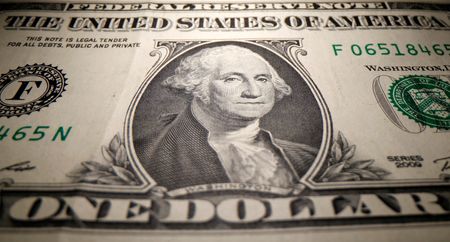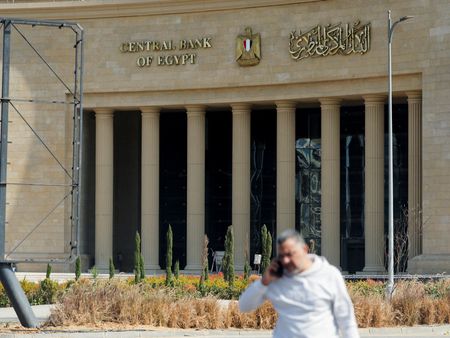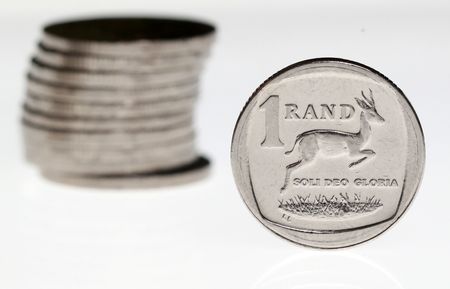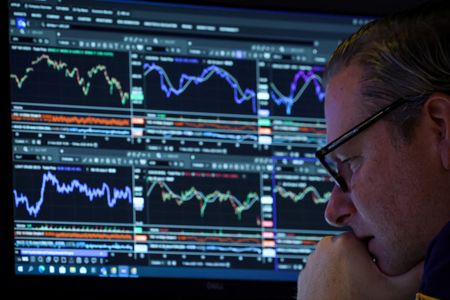By Laura Matthews and Alun John
NEW YORK/LONDON (Reuters) -The dollar firmed against most major currencies on Thursday, after losing some ground as signs of faster U.S. job growth in September suggest the Federal Reserve is likely to pause cutting interest rates in December.
Long-awaited data released on Thursday showed that employers added more jobs than economists had expected, but the unemployment rate rose.
Nonfarm payrolls increased by 119,000 jobs in September. Economists polled by Reuters had forecast 50,000 jobs would be added. The unemployment rate rose to 4.4%, from 4.3% in August. The data was delayed because of a government shutdown.
“The September prints were mixed with payrolls at more than twice expectations, August’s figure revised into negative territory, and unemployment edging higher,” said Uto Shinohara, senior investment strategist at Mesirow Currency Management.
“Because the data was stale and avoided a bombshell negative print, risk sentiment improved after the recent drop in risk assets pre-NVIDIA, keeping the dollar in check.”
The yen remained on the back foot, falling 0.41% against the dollar at 157.82 yen. The dollar rose as high as 157.78 yen, its strongest since January, putting the Japanese currency on track for a fourth daily decline.
JAPANESE STIMULUS PACKAGE
Since Prime Minister Sanae Takaichi was elected leader of the ruling party last month, the yen has depreciated by around 6% despite rising Japanese bond yields, with markets uneasy about the scale of borrowing needed to fund her stimulus plans.
Japan’s new government is preparing a comprehensive economic stimulus package worth more than 20 trillion yen, the biggest since the COVID pandemic, that Takaichi is expected to unveil on Friday.
Japanese Finance Minister Satsuki Katayama said on Tuesday the government was closely watching the market “with a high sense of urgency.”
“There is a level, we don’t know what the level is, the Japanese authorities may be waiting for the market to get shorter yen before deciding on serving intervention strategy,” said Steve Englander, head of global G10 FX research and North America macro strategy at Standard Chartered.
“One of the issues, and this is something that intervention can’t fix, the yen’s weakness has been correlated with concerns about the Japanese fiscal position and the risk of an expansion. You can intervene and it is going to have an effect, but it doesn’t change the concerns that exist.”
Traders now figure Japanese authorities may intervene somewhere around the 160 mark, as they did last July, or if there are any more sudden moves.
Chief Cabinet Secretary Minoru Kihara said moves were sharp, one-sided and concerning on Thursday.
FED MINUTES SUGGEST DECEMBER RATE CUT IS UNLIKELY
Beyond Japan, the euro, the Swiss franc, the Australian dollar and sterling all fell against the dollar after minutes from October’s Federal Reserve meeting showed “many” participants had already ruled out a December cut, while “several” others saw a December cut as likely.
Fed funds futures are pricing an implied 39% probability of a 25-basis-point cut at the December 10 meeting, according to the CME Group’s FedWatch tool.
The euro was last down 0.15% at $1.1522, after hitting a two-week low, while sterling was up 0.21% to $1.3084, but at its lowest since early this month.
That left the dollar index, which tracks the U.S. currency against six others, up 0.16% at 100.24, testing a six-month high hit in early November.
“I don’t think the U.S. economic data is that strong, and we think there is room for an insurance cut,” said Englander. “But we are not sure the FOMC agrees with us on that.”
(Reporting by Laura Matthews in New York and Alun John in London; Additional reporting by Ozan Ergenay in London and Tom Westbrook in Singapore; Editing by Jamie Freed, Gareth Jones, Mark Heinrich and Jane Merriman)










